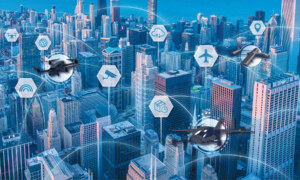Real‑world asset (RWA) tokenization is gaining traction as a bridge between conventional finance and blockchain innovation. At its core, tokenization converts ownership or claims to physical assets—like real estate, private credit, or commodities into digital tokens on a blockchain. Advances in smart contract platforms, clearer global regulation, and growing institutional interest are driving this adoption, with platforms like RWA.xyz tracking market activity in real time. Understanding Real World Asset Tokenization
What Is RWA Tokenization and Why Now?
RWA tokenization takes an off‑chain asset, places it into a legally recognized special‑purpose vehicle, and issues on‑chain tokens representing fractional ownership. Smart contracts handle KYC/AML compliance and enforce programmed rules allowing secure, transparent, and efficient investment. As explained in Tokenizer’s Understanding Real World Asset Tokenization, this emerging model helps bring traditional assets onto programmable networks in a compliant way.
Key drivers include better blockchain infrastructure (especially Ethereum, Polygon, Solana, Base), evolving legal frameworks across regions, and a growing appetite from institutional investors to access illiquid markets via tokenized derivatives.
How Tokenization Works: A Simplified Overview
- An asset say, a piece of commercial real estate is placed into a regulated legal entity.
- That entity issues digital tokens on-chain.
- Each token represents an economic interest backed by the real asset.
- Investors buy tokens post-KYC completion.
- Smart contracts govern ownership, dividends, resale rights, and compliance.
This system streamlines settlement, lowers minimum investment thresholds, and enables global participation.
Leading RWA Categories & Realistic Examples
Private Credit
Currently the largest RWA segment. Protocols such as Maple Finance and Centrifuge facilitate tokenized loans, offering yield opportunities through decentralized pools.
Real Estate
Projects like RealT, Blocksquare, and Lofty tokenize rental properties and commercial buildings, giving investors fractional access to markets in the U.S., UAE, Europe, and Latin America.
Commodities
Stable asset tokenization examples include PAX Gold, where each token is pegged to one troy ounce of vaulted gold.
Bonds & Fixed Income
Ondo Finance and Backed Finance are issuing tokenized U.S. Treasuries and corporate bonds. Over $1.2B in bond RWAs are tracked on-chain.
Asset-backed Stablecoins
Icons like USDC and USDT act as liquidity rails and are themselves backed by secure reserves, contributing to the broader RWA ecosystem.
Regulatory & Technical Enablers
Tokenization’s growth depends on legal clarity. Key frameworks include the EU’s MiCA regulation, U.S. Reg D/Reg S exemptions, and Abu Dhabi’s VARA in the UAE. These tools ensure token issuance, investor eligibility, and secondary‑market trades remain compliant.
Technically, interoperability matters: a token might be issued on Ethereum but usable on faster, cheaper chains like Polygon or Solana. Secure custody services, smart‑contract audits, and identity‑focused access control are critical compliance layers.
Market Snapshot
As of May 2, 2025, Tokenizer.Estate reported approximately $18.9 billion in tokenized RWAs on-chain, spanning top chains like Ethereum, Polygon, Solana, and Base. (As of July 27, 2025, RWA.xyz shows ≈ $25.21 billion total on-chain RWA volume.)
Benefits and Considerations
Benefits:
- Fractional access enables retail participation in high-value assets.
- Transparency via on-chain records and programmable compliance.
- Faster settlement and lower friction, particularly across borders.
- Expanded global reach for asset token issuers.
- Potential cost efficiencies compared to paper-based markets.
Considerations:
- Legal classification of tokenized assets may vary by jurisdiction.
- Custody and technical risk must be managed through trusted intermediaries.
- Liquidity can be limited in secondary markets, especially for niche asset types.
- Investor suitability and disclosure standards must be maintained.
Regulated structures and transparent documentation mitigate many of these concerns, but investor due diligence remains essential.
Why RWAs Are Gaining Mainstream Momentum
Tokenization is entering the mainstream as both technology and regulation align. Institutions seek stable yield products beyond traditional finance, while fintech innovators require regulated infrastructure to scale. As outlined in Tokenizer’s Understanding Real World Asset Tokenization, RWAs are bridging traditional markets with blockchain through compliant, data-driven platforms.
For ongoing coverage of tokenized assets and real-estate RWAs, visit the Tokenizer blog for deep dives and expert insights.
In summary, RWA tokenization is reshaping how physical assets are accessed, invested in, and traded. Through regulated models, blockchain-enabled transparency, and fractional participation, real-world tokenized markets are paving the way for greater inclusion, efficiency, and innovation in finance. Readers seeking a comprehensive walkthrough are encouraged to explore Tokenizer.Estate’s detailed guide.



